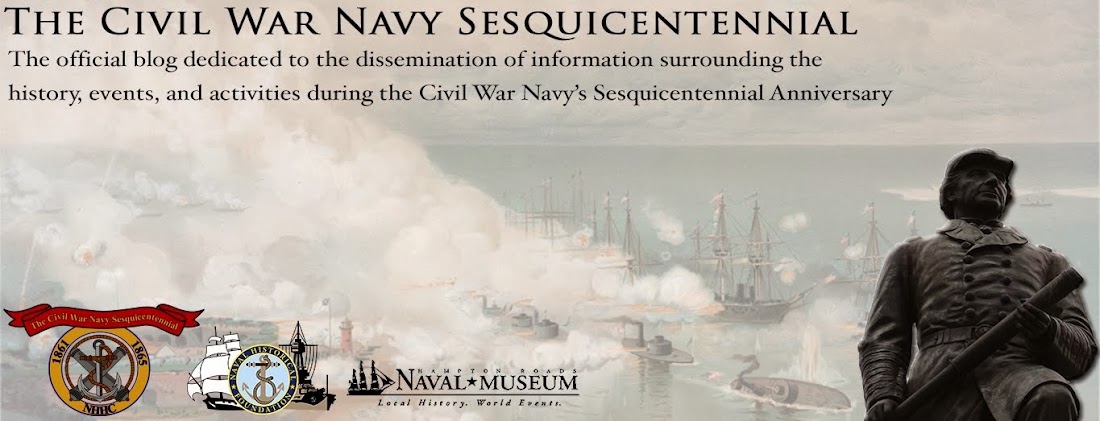
On the night of 5 October 1863, David faced Goliath. It would not be the epic showdown of biblical times during the American Civil War, but one of explosions, iron, and rushing water under the moonlight of Charleston.
USS New Ironsides, a casemate ironclad steamer boasting fourteen eleven-inch smoothbores, was at the time considered the most formidable warship in the world. It proved to be nearly impenetrable to the Charleston harbor defenses. The Union “Goliath” and its Captain, S.C. Rowan, waited for any answer the Confederates had to test the mighty ship. Little did they know its “Davidian” foe would pack such a punch given its comparable size.
The Confederate semi-submersible ship David did not have rocks and slings. Instead, its armament consisted of a single spar torpedo attached to its bow. As the cigar-shaped vessel was designed to operate in shallow water, its five foot draft allowed her to sneak up on enemies seemingly undetected. Around 9 p.m. on the 5th, CSS David slipped into Charleston Harbor unnoticed, avoiding the blockading monitors as it sailed toward the pride of the Union fleet. It was not until the David was 50 yards from the Union ship that a sailor spotted her. David successfully rammed its spar torpedo into the starboard quarter of the New Ironsides, exploding seven feet below the water line. From the account of New Ironsides Captain S.C. Rowan:
Although the attack caused a large fissure into the side of the New Ironsides, the damage was superficial. One Union sailor died, and two others suffered minor injuries. Two of David’s crew were captured from the attack. Yet if it wasn’t for the quick thinking of Tomb, David’s story would begin and end in 1863.
Remarkably, New Ironsides remained on duty without repair until May 1864. Its damages were superficial. CSS David went on to unsuccessfully attack USS Memphis in March 1864 in the North Edisto River and the USS Wabash the following month. Although the ultimate fate of the David is uncertain, several similar vessels were captured in Charleston after its capture in February 1865.
Today marks the 147th anniversary of the event.
USS New Ironsides, a casemate ironclad steamer boasting fourteen eleven-inch smoothbores, was at the time considered the most formidable warship in the world. It proved to be nearly impenetrable to the Charleston harbor defenses. The Union “Goliath” and its Captain, S.C. Rowan, waited for any answer the Confederates had to test the mighty ship. Little did they know its “Davidian” foe would pack such a punch given its comparable size.
The Confederate semi-submersible ship David did not have rocks and slings. Instead, its armament consisted of a single spar torpedo attached to its bow. As the cigar-shaped vessel was designed to operate in shallow water, its five foot draft allowed her to sneak up on enemies seemingly undetected. Around 9 p.m. on the 5th, CSS David slipped into Charleston Harbor unnoticed, avoiding the blockading monitors as it sailed toward the pride of the Union fleet. It was not until the David was 50 yards from the Union ship that a sailor spotted her. David successfully rammed its spar torpedo into the starboard quarter of the New Ironsides, exploding seven feet below the water line. From the account of New Ironsides Captain S.C. Rowan:
"At 9 p.m. discovered a very peculiar looking steamer which at first appeared like a boat standing toward our starboard beam from seaward; hailed her rapidly four times, and she making no reply, fired into her with musketry; she returned fire, dangerously wounding Ensign C.W. Howard in charge of the deck [. . .] the steamer struck us near No. 6 port, starboard side, exploding a large torpedo, shaking the vessel and throwing up an immense column of water, part of which fell on our decks.”The blast threw water on the deck and the smokestack of the David, which put out a fire in the engine. The explosion knocked down armory bulkhead and store rooms aboard the New Ironsides in the wake of the torpedo’s explosion. Amidst the confusion, David floated attached by her spar, unable to reverse without steam power. As a result, Union sailors rained down rifle and pistol fire onto their aggressor. The Captain of the David ordered to abandon ship, and the crew set out swimming for nearby Morris Island. As they headed toward the shore, Assistant Engineer J.H. Tomb swam back to the wounded ship and got its engine working again. David limped back to safety in Charleston, picking up her remaining crew along the way.
Although the attack caused a large fissure into the side of the New Ironsides, the damage was superficial. One Union sailor died, and two others suffered minor injuries. Two of David’s crew were captured from the attack. Yet if it wasn’t for the quick thinking of Tomb, David’s story would begin and end in 1863.
Remarkably, New Ironsides remained on duty without repair until May 1864. Its damages were superficial. CSS David went on to unsuccessfully attack USS Memphis in March 1864 in the North Edisto River and the USS Wabash the following month. Although the ultimate fate of the David is uncertain, several similar vessels were captured in Charleston after its capture in February 1865.
Today marks the 147th anniversary of the event.

No comments:
Post a Comment